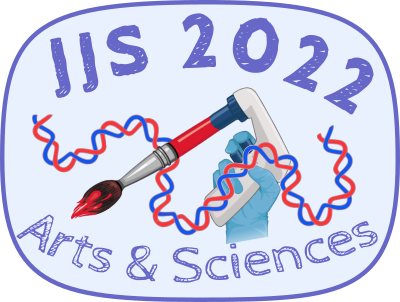|
Welcome ! The Young Scientists' Days (YSD) are key moments at the Station during which young scientists (all levels, all ages, all disciplines) are honoured. All members of the Station, whether they are visiting or not, are invited to attend the event and young scientists are strongly encouraged to present results, work or projects (even those in preparation). There are several presentation formats and presenters are encouraged to be colourful with their interpretation of the theme.
We strongly encourage you to register for the workshops, come to the conferences and make presentations!
To submit a presentation during the conference, the poster session and/or the art exhibition, simply enter the title and description in the right category in your registration on this website.
We look forward to seeing you there, The YSD 2022 team To contact us: jjs @ sb-roscoff.fr
Provisional programme Possible formats for conference presentations are: -10 min oral presentation, -3min oral presentation, inspired by MT180 (my thesis in 180 seconds). This is a short presentation during which you can synthesise some ideas (research project, results, other...).
-Poster, classic format, -Free work, artwork. The formats and subjects are very free: photography, drawing, short film (less than 5min), song, dance, poem, collage, ... Be creative, artistic, scientific, poet or philosopher. Does "Arts and Sciences" inspire you? We will use a video projector to show the free works which are in image and video form.
For new members of the Station, you may present past work or future projects. For the presentations, you can be inspired by the theme as much as you want! Art Workshops Experimental Anthotype
Anthos comes from the Greek and means "flower" while typos means "print". Anthotype therefore refers to a photographic process, invented in the middle of the 19th century, which uses the photosensitivity of flowers to create images. It is a member of the It is part of the family of photographic processes based on plants, known as phytotyping. Mary Somerville (1780-1872), a Scottish woman forgotten in the history of photography, was one of the of photography, was one of the pioneers in the study of the impact of light rays on light-sensitive surfaces.
Anthotype example Linocut
In the 'relief carving' family, here is linocutting, a simple and fun technique. It consists in digging with gouges, a sheet of linoleum on which you have previously drawn a pattern (or not... if you improvise!). on which a motif has been drawn beforehand (or not... if you start improvising!). The plate is then inked with a roller. To finish, we print the pattern we have engraved on different on different materials: paper, cardboard, fabric...
The workshop led by Valérie Guillet:
Key Note Speakers Helena Cruz de Carvalho is a lecturer at the Institute of Biology of the Ecole Normale Supérieure (IBENS). She studies genetic responses to environmental stress in photosynthetic organisms, land plants and unicellular algae. Her research has led her to study non-coding RNAs, which have been shown to be major regulators of cellular processes. In addition to science, Helena is passionate about art and is particularly interested in the methods and practice of cyanotype. This technique is based on the use of light-sensitive compounds exposed and reacted to light in contact with negatives or organisms. The resulting images are monochrome Prussian blue. During her presentation, Helena will share current and historical examples of the use of artistic techniques for science and scientific techniques for art. Cyanotype of the brown alga
Benjamin Rivière is a visual artist who develops work that evokes traces, imprints and memories. His approach is based on collecting, manipulating and cutting out signs and symbols with which he composes images, writes films and assembles forms. This practice places him alternately in the attitude of the researcher, the photographer, the filmmaker and the designer. After three years of teaching Plastic Arts at the Ecole Nationale Supérieure d'Architecture de Versailles, he teaches image, documentary practices and publishing at the Ecole Européenne Supérieure d'Art de Bretagne of Quimper. During his presentation, Benjamin will share with us some of the results of his project « Les eaux composées » during which he spent time at the Biological Station. In addition, Benjamin will discuss the parallels between artistic and scientific processes. Art students and a scientist at the Station as part of « Les eaux composées » project During his presentation, Benjamin will share with us some of the results of his project "Compound Waters" during which he spent time at the Biological Station. In addition, Benjamin will discuss the parallels between artistic and scientific processes.
|


